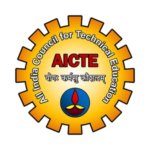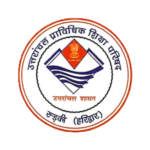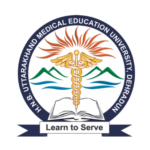Research is a cornerstone of pharmaceutical education and practice. For B.Pharma students, mastering research methodologies is essential not only for academic success but also for professional excellence. This article explores the critical aspects of it, highlighting how they bridge the gap between theoretical knowledge and practical application.
Introduction
In the field of pharmacy, research methodologies are the tools that allow students to explore, understand, and innovate. They transform abstract theories into tangible outcomes, driving advancements in drug development, patient care, and healthcare policies. B.Pharma students equipped with robust research skills can contribute significantly to the pharmaceutical industry, academic research, and clinical practice.
Understanding Research Methodologies

It refers to the systematic approaches used to conduct scientific inquiries. These methodologies encompass a wide range of techniques and procedures designed to gather, analyze, and interpret data. For B.Pharma students, familiarizing themselves with these methodologies is crucial for several reasons:
- Knowledge Integration: Applying theoretical knowledge to real-world scenarios.
- Critical Thinking: Developing analytical skills to assess and solve complex problems.
- Innovation: Contributing to the creation of new drugs and therapies.
- Professional Development: Enhancing career opportunities in various pharmaceutical fields.
Types of Research Methodologies

- Quantitative ResearchQuantitative research involves the systematic investigation of phenomena through the collection and analysis of numerical data. It aims to quantify variables, test hypotheses, and establish statistical relationships.
- Experimental Research: Conducting managed experiments to check hypotheses.
- Observational Research: Collecting data through observation without manipulating variables.
- Survey Research: Using structured questionnaires to gather data from large groups.
- Qualitative ResearchQualitative research focuses on understanding the meaning and characteristics of human behavior and experiences. It uses non-numerical data to explore concepts, ideas, and processes.
- Case Studies: In-depth analysis of individual or group cases.
- Interviews: Conducting one-on-one or organization interviews to collect distinct information.
- Focus Groups: Facilitating discussions among a group of participants to explore specific topics.
- Mixed-Methods ResearchMixed-methods research combines quantitative and qualitative approaches to provide a comprehensive understanding of research questions. It allows for the triangulation of data, enhancing the reliability and validity of findings.
Steps in Conducting Research
- Identifying Research ProblemsThe first step in any research project is to identify a relevant and feasible research problem. B.Pharma students should look for gaps in existing knowledge, current challenges in pharmacy practice, or emerging trends in pharmaceutical sciences.
- Literature ReviewConducting a thorough literature review helps students understand the current state of research on their topic. It provides insights into previous studies, methodologies used, and key findings, helping to refine the research question and methodology.
- Formulating Hypotheses and ObjectivesBased on the literature review, students should formulate clear research hypotheses and objectives. Hypotheses are testable predictions, while objectives outline the specific goals of the research.
- Research DesignChoosing the appropriate research design is crucial for the success of the study. Students must decide on the type of research (quantitative, qualitative, or mixed-methods), data collection methods, and sampling techniques.
- Data CollectionData collection involves gathering information using the chosen methods. B.Pharma students must ensure that data collection procedures are ethical, reliable, and valid. This may involve conducting experiments, administering surveys, or conducting interviews.
- Data AnalysisAnalyzing the collected data involves using statistical or thematic analysis techniques to interpret the findings. Quantitative data is typically analyzed using statistical software, while qualitative data may be analyzed using coding and thematic analysis.
- Interpreting ResultsInterpreting results involves drawing conclusions based on the data analysis. Students should relate their findings to the original research question, hypotheses, and existing literature, discussing the implications and limitations of their study.
- Presenting and Publishing ResearchFinally, presenting and publishing research findings is essential for disseminating knowledge and contributing to the scientific community. Students should aim to publish their research in peer-reviewed journals and present at conferences.
Bridging the Gap Between Theory and Practice

For B.Pharma students, understanding research methodologies is not just an academic exercise; it is a bridge between theory and practice. Here are some ways this research contribute to this bridging process:
-
Enhancing Clinical Practice
Research methodologies enable students to apply scientific principles to clinical practice. For example, evidence-based practice involves integrating research findings into patient care, improving treatment outcomes and patient safety.
-
Progressing Pharmaceutical Innovations
Through research, students can contribute to the development of new drugs, formulations, and therapies. This involves understanding the mechanisms of action, pharmacokinetics, and pharmacodynamics of drugs, as well as conducting clinical trials.
-
Informing Healthcare Policies
Research findings can inform healthcare policies and regulations, ensuring that they are based on scientific evidence. This is particularly important in areas such as drug safety, public health, and healthcare access.
-
Fostering Innovation
Research fosters innovation by encouraging students to think creatively and develop novel solutions to existing problems. This can lead to the development of new technologies, drug delivery systems, and treatment protocols.
Conclusion
Research methodologies are essential for B.Pharma students, providing the tools needed to bridge the gap between theory and practice. By mastering these methodologies, students can enhance their clinical practice, contribute to pharmaceutical sciences, inform healthcare policies, and foster innovation. As the pharmaceutical field continues to evolve, the importance of research will only grow, making it a critical component of pharmacy education and practice. Embracing this methodologies will not only advance students’ careers but also improve healthcare outcomes and contribute to the betterment of society.






